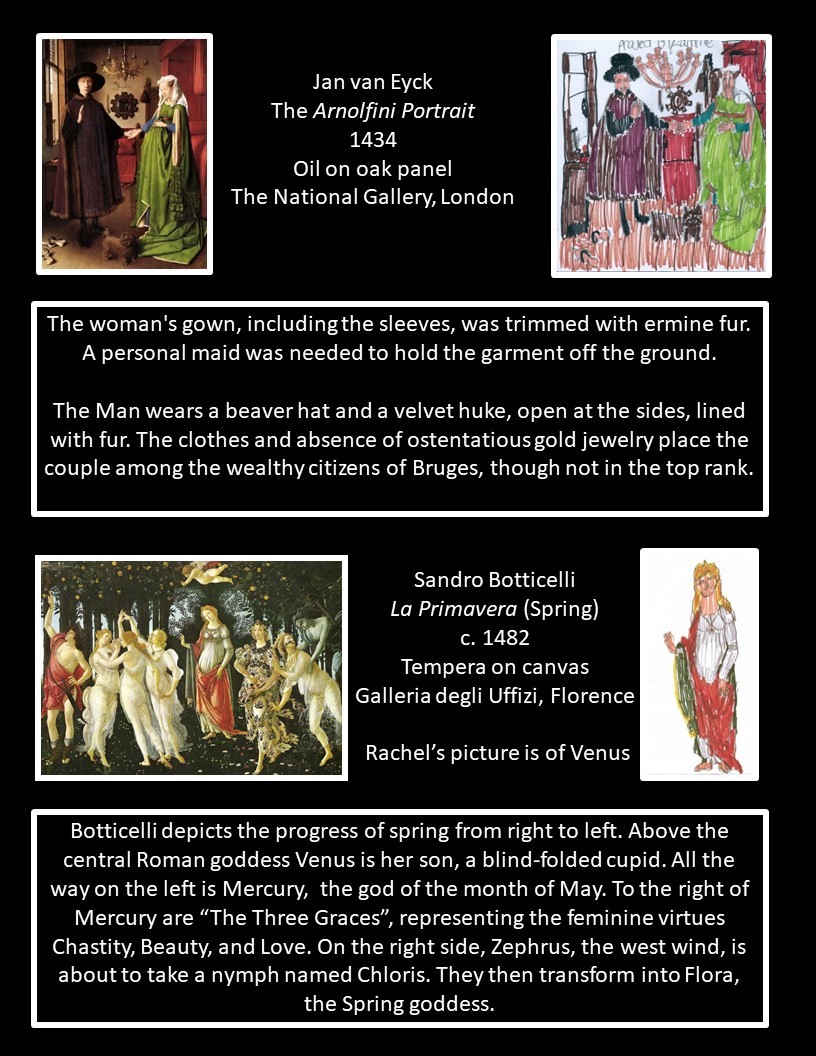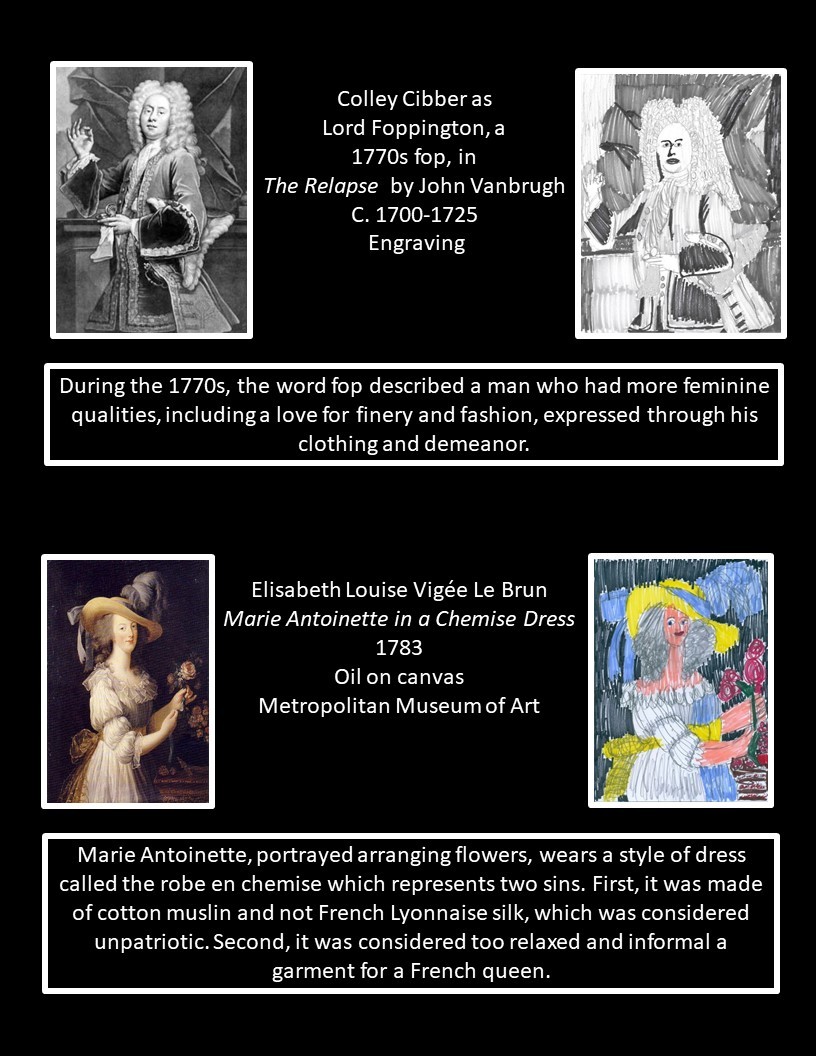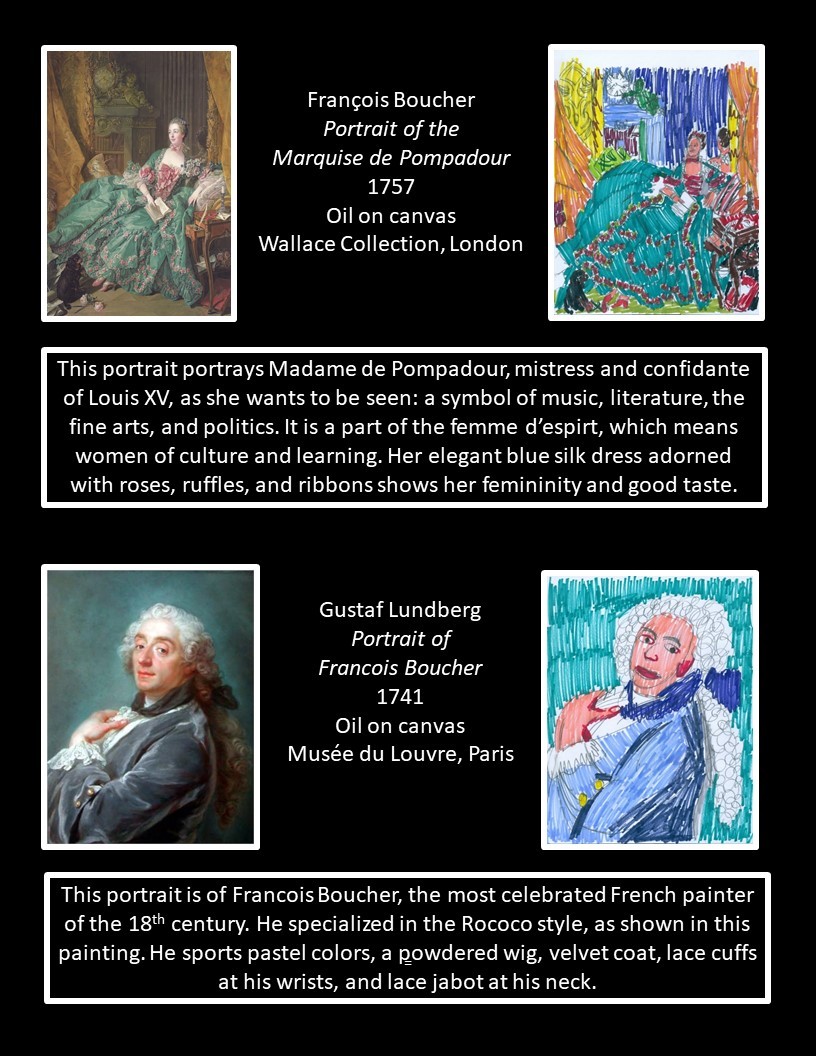Breaking Ground 109 Arts - Inspired by the Masters: A Fresh View of Fashion History
By Alexandra Sargent Capps, Senior Lecturer of Theatre, Costume Designer & Costume Shop Manager, Vanderbilt UniversityDynamic, inclusive classrooms form when all students contribute their skills, ideas, and interpretation of the subject matter. In Spring 2021, I had two students from Next Steps at Vanderbilt University (an inclusive higher education program), Rachel Sarubbi and Kristi VanWulven, in my History of Fashion course. Throughout the semester, I incorporated their visual and written interpretations of fashion history into the main class presentations. Their expressive work inspired the rest of the class to generate personalized, creative ideas and projects.
Rachel produced 26 drawings which serve as a broad visual overview of Western fashion history. Rachel clearly depicts her subject matter in an identifiable artistic drawing style, which is energetic, accurate, and distinctive. Rachel’s drawings of iconic, historic masterworks demonstrated to the other students that applying one’s personal, contemporary style in creating projects can bring classical works to life and give them renewed relevance.
Kristi researched and wrote informative, relevant text about the original works of art. Kristi’s text provides essential background for and context to Rachel’s drawings. Rachel and Kristi’s project added a colorful, fun, and engaging educational dimension to our classroom.
I love that this project represents the collaborative work of two Next Steps students. Their individual efforts elevate the other’s work. Together, they accomplished a large-scale class project that educates us about fashion history and is artistically inspiring.

Interviewing Rachel Sarubbi
Rachel Sarubbi, a native of Nashville, TN, is a second-year student in Vanderbilt’s Next Steps inclusive higher education program.
“These drawings are my interpretation of famous works of art. I created them as my contribution to our class Power Point presentations. I hope my drawings demonstrate how beautiful works of art can inspire all of us in discovering creative means of self-expression. During the semester, I produced twenty-six drawings that represent an overview of western fashion history, from ancient Rome to the present day.
My process included looking at the original works, drawing them in pencil, and then I chose my colors. Each drawing took me a few hours to complete. I was very careful to get every detail from the original work onto my paper before I stared coloring. I draw what I see.
My art materials for these drawings are white paper, pencils, and Sharpie markers. I have worked in watercolor paints, markers, clay, and wood sculpting.”
Interview with Rachel
- What did you enjoy about the class? - I enjoyed that I copied pictures for my history of fashion class by tracing, coloring them, and then sharing them with the teacher and the class.
- What did you learn in the class? - I learned how clothes are made and how and why they change over the years.
- What was your process in choosing which historic paintings to draw? - Some of my drawings were assigned to me and some I picked for myself. My process of choosing them was not hard and there were some I love. I usually picked the pictures to draw that had a lot of color.

Interviewing Kristi VanWulven
Kristi VanWulven, a native of Nashville, Tenn., is a 2021 graduate from the Next Steps Program.
“I enjoyed working on this project with and getting to know Next Steps student Rachel Sarubbi. I think Rachel’s drawings are amazingly beautiful. Rachel’s drawings were based on topics in the spring History of Fashion class at Vanderbilt University. My process involved working with my tutor Alexa many afternoons. I wrote information about the paintings that I liked reading and learning about. This project helped me to improve my writing skills.”
Interview with Kristi
- What did you enjoy about the class? - I enjoyed learning about the different topics of the history of fashion and about the different fabrics.
- What did you enjoy about writing the descriptions of the original artwork? - I enjoyed searching online to find the text information about different people based on the drawings Rachel sketched.
- What did you learn from writing these descriptions? - I learned about the history and the different types of clothing and fabrics of the people in the original artwork. My VU tutor ambassador, Alexa, helped me find the best sources for the information.
- Why do you take pride in this accomplishment with another Next Steps student? - I took pride in the accomplishment of this project with another Next Steps student because it shows other Vanderbilt students what amazing talents and skills we have to share.
